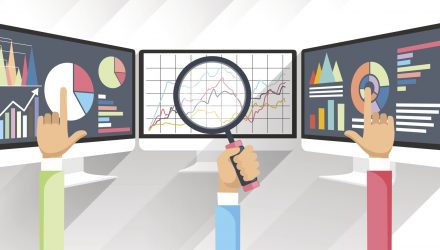We are still in early innings in the index investing space. For example, ETFs have yet to penetrate defined contribution platforms such as 401K’s and 529’s in any meaningful way. In addition, actively managed ETFs still make up a small part of the overall market. Although equity ETFs have a very robust offering, other asset classes such as fixed income lag primarily due to the liquidity challenges of the underlying assets because of market and product structure. Niche, innovative index product sponsors have tremendous opportunity to create products that don’t fit the models of the mega-firms.
Kranefuss
First, a back-to-basics approach. The gold standard should be a traditional index and then other offerings can be compared to it on all dimensions: cost, tax-efficiency and consistent performance over the long run.
Second, I think there are ideas and approaches that do make sense to augment what was known in 2000. Factors, for example, are a realistic and reasonable idea for the modern world.
ETF BILD: What is the next innovation in the industry that you are working on or that you expect to see?
Bond
The ETF is an efficient vehicle that can be used to provide investors with a better overall investment experience and disrupt traditional markets along the way. One innovation I am open to discussing is the concept of replicating a structured note payoff within an ETF. The structured note space is massive (nearly $1 trillion in the U.S. alone), and we think it’s ripe for disruption. We have worked with several leading companies to build a series of ETFs that afford investors defined exposures to the S&P 500 Price Index where the downside protection level, upside growth potential, enhancement level and outcome period are all predetermined. The first two in this series of “defined outcome” ETFs – the Innovator S&P 500 Power Buffer ETF (PJUL) and Innovator S&P 500 Ultra Buffer ETF (UJUL), which were listed on the Cboe on August 8, 2018.
Jacobs
I think the next round of innovation will occur at the product level to try to solve the twin problems of lack of seed capital and the challenge of creating a liquid ETF on illiquid underlying constituents.
Kranefuss
Personally, I am working on a book and an internet app that tries to help people step back from staring at the bark and see the forest. Investing is really about meeting your long-term needs after costs, taxes and inflation. My goal is a simple-to-use, free tool for investors that lets them focus on a basic savings and investment plan (assuming to start, low-cost and tax-efficient ETFs) to see if their savings and spending plan have any hope of carrying them through retirement. The rest are seeking better performance, worrying about big market swing years and trying to catch the brass ring by buying hot stocks, or funds, that can be tested later to see if they work, especially after tax.
ETF BILD: What is the biggest concern you have in the industry today that you would like to see change?
Bond
Historically, the investment landscape has suffered and has been held back from a type of “pay-to-play” where certain institutions seek to protect less efficient products. You see this quite often in the retirement space where mutual funds and insurance products have historically dominated. I think the ETF vehicle could bring a lot more efficiency to people’s retirement savings, and I would love to see that happen.
Jacobs
My biggest concern is that since Reg NMS was implemented, the markets have been primarily built on speed, speed, speed. That works great if you are QQQ or Apple, but less liquid products and companies don’t reap the same benefit from that market structure. There is no one single market structure that can optimally serve all types of financial products and issuers. I would love to see market segments that have differing market structures that are best suited for an issuer at any particular stage of their life. This would be an issuer choice and they would have the freedom to change market segments as their needs changed.
Kranefuss
Far too many ETFs. People took a great delivery vehicle for an investment thesis with huge amounts of empirical justification and institutional adoption and turned it into a marketing tool for their little-know investment idea. They are riding the coattails of ETF success but selling sizzle, not steak.
ETF BILD: What is your vision for the industry 20 years from now?
Bond
The ETF structure is still in its infancy relative to other investment products. I do not attempt to predict the future, but I do try and shape it through innovation. I can almost guarantee over the next 20 years there will be markets to disrupt and new asset classes to provide access to through the ETF vehicle. If I made one prediction it would be that we see a continued decline in mutual funds and more asset flows going into ETFs. That seems like a safe bet but to me, by keeping our attention locked in the present and with an eye toward the future, the next 20 years will essentially write itself.
Jacobs
In 20 years, I foresee that the ETF industry will still be booming, the leading edge of financial product innovation and the key to investment and trading strategies for retail investors, institutional investors and their advisors. ETFs will have penetrated multiple asset classes, product channels and geographic adoption. The industry will be less focused on active vs. passive, since both are critical, and rather look to what product can deliver the investment results desired in the most efficient manner while balancing risk and return.
Kranefuss
Products that are tightly integrated with robust tools that shine a critical light on reality. You really don’t need that many funds to build a low-cost, extraordinarily diversified and tax-efficient portfolio. The right tools are the only way I see to cut through the clutter.
